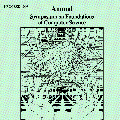We revisit the MaxSAT problem in the data stream model. In this problem, the stream consists of $m$ clauses that are disjunctions of literals drawn from $n$ Boolean variables. The objective is to find an assignment to the variables that maximizes the number of satisfied clauses. Chou et al. (FOCS 2020) showed that $\Omega(\sqrt{n})$ space is necessary to yield a $\sqrt{2}/2+\epsilon$ approximation of the optimum value; they also presented an algorithm that yields a $\sqrt{2}/2-\epsilon$ approximation of the optimum value using $O(\log n/\epsilon^2)$ space. In this paper, we focus not only on approximating the optimum value, but also on obtaining the corresponding Boolean assignment using sublinear $o(mn)$ space. We present randomized single-pass algorithms that w.h.p. yield: 1) A $1-\epsilon$ approximation using $\tilde{O}(n/\epsilon^3)$ space and exponential post-processing time and 2) A $3/4-\epsilon$ approximation using $\tilde{O}(n/\epsilon)$ space and polynomial post-processing time. Our ideas also extend to dynamic streams. On the other hand, we show that the streaming kSAT problem that asks to decide whether one can satisfy all size-$k$ input clauses must use $\Omega(n^k)$ space. We also consider other related problems in this setting.
翻译:在数据流模型中, 我们重温了 MaxSAT 问题 。 在这个问题中, 流由百万美元条款组成, 它们是从 美元 Boolean 变量中提取的字数的不相交值。 目标是找到一个可以最大限度地增加满意条款数量的变量的配置 。 周等人( FOCS 2020) 显示, $\\ omega (\ sqrt{ 2} /2 ⁇ / epsilon$ 接近最佳值 ; 在这个问题中, 流也展示了一个算法, 以美元( sqrt{ 2} /2- epsilon$ 来计算最优值的正近值 。 在本文中, 我们不仅关注优化值的匹配, 而且需要使用 sublinear $o( mn) 空间的对应任务。 我们用 r. h. p. silental 单个算法, 我们用 $ $ (n\ eplational$ On\\ deal) lax lax lax lax lax As- clas- clas- pillon2) 和 exp- sal explex An (n) explex 3) 3/ slational explexx 和 Orusleval- sl) 3/ sal_ exxxxxxxxxxxxxxxxxxxxxxxxxxxxxxxxxxxxxxxxxx 和 。 (nxxxxxxxxxxxxxxxxxxxxxxxxxxxxxxxxxxxxxxxxxxxxxxxxxxxxxxxxxxxxxxxxxxxxxxxxxxxxxxxxxxxxxxxxxxxxxxxxxxxxxxxxxxxxxxxxxxxxxxxxxxxxxxxxxxxxxxxxxxxxxxxxx



